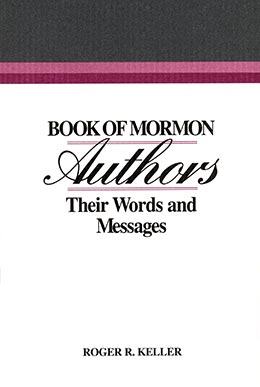Introduction
Roger R. Keller, introduction to Book of Mormon Authors: Their Words and Messages (Provo, UT: Religious Studies Center, Brigham Young University, 1996), x–xiii.
The purpose of this study is threefold: (1) to identify differences and/
Fundamental to this research has been the fact that prophets are persons, and that they are therefore different from one another. Many Latter-day Saints could probably distinguish between the writings of Ezra Taft Benson, Spencer W. Kimball, David O. McKay, Brigham Young, and Joseph Smith, since each prophet had characteristics and themes unique to himself. The Lord called these very unique persons, instructed them, trained them, and then summoned them to speak his message to the people of their day. Often, the issues needing to be addressed differed from period to period, and thus the messages differed. If this is the case with latter-day prophets, it was probably true of ancient prophets. Since the Book of Mormon is believed by Latter-day Saints to be a compilation of writings from numerous ancient authors, then one should be able to discern the unique content words used by the authors whose messages are preserved within its pages. It should also be possible to ascertain any differences in the meanings attached to those words.
The research in this volume first separates the words of the various Book of Mormon authors from one another and then attempts to determine which of the select content words the different authors used and how they used them. If the Book of Mormon is, as it claims, an edited compilation of writings spanning a period of approximately one thousand years, then one could expect each author to exhibit some unique linguistic fingerprints. The word cluster studies of chapter 1 will test this basic hypothesis. The subsequent chapters will examine narrow word groups to determine whether the inferences of chapter 1 are supportable.
It is recognized that a significant amount of work has been done by Wayne A. Larsen, Alvin C. Rencher, [2] John L. Hilton, and Kenneth D. Jenkins [3] on what are called “wordprints.” Their fundamental supposition is that one can differentiate between authors, given a sample of a few thousand words, by examining the use of the small, function words, i.e., the, and, but, of, etc. While wordprint studies help us recognize that different authors did indeed write the various strands within the Book of Mormon, they tell us little about what the various authors’ unique subjects may have been as found in their recorded words. By contrast, this study focuses on the content words, i.e., those that are theologically, culturally, and historically signifi-cant. If, on the basis of the content words, we can demonstrate differences in word use among authors—some of whom through wordprints have clearly been shown to be independent writers—then we can say the two studies reinforce one another. In addition, we also learn something about important words and how they are used by the authors.
We pursue the above objectives in two ways. First, we attempt to distinguish the general areas of expressed interest among the various authors by using word groups related to diverse themes, e.g., Agriculture, Christology, Church, Creation, etc. As the study will show, these word groups indicate some clear differences in usage among the Book of Mormon authors. Second, a series of word studies, focusing on individual words relating to Law/
Readers will notice that the various word studies are developed in different ways. This is all a product of exploring various ways to organize the material. Hence, there are several models that others may wish to use to perfect or to expand interpretation.
The end result is that there are clear and recognizable differences in the content words used and the meanings attached to them by the authors within the Book of Mormon. It is not, however, the intent of this study to explore the synonyms that a given author may have used in place of the particular word or words under consideration. Such a study would be interesting and instructive, but such an expanded enterprise must be left for others.
Notes
[1] Throughout this study, the term “author” will be applied to both writers and speakers within the Book of Mormon. Thus, not only are Nephi 1, Jacob, and Mormon “authors,” but so are the Lord, Jesus, and the Father.
[2] Wayne A. Larsen and Alvin C. Rencher, “Who Wrote the Book of Mormon? An Analysis of Wordprints,” In Book of Mormon Authorship: New Light on Ancient Origins, ed. Noel B. Reynolds, Religious Monograph Series 7 (Provo, UT: Religious Studies Center, Brigham Young University, 1982), 157–88. See also John L. Hilton, “On Verifying Book of Mormon Wordprint Studies: Book of Mormon Authorship,” BYU Studies 30:89–108.
[3] John L. Hilton and Kenneth D. Jenkins, “On Maximizing Author Identification by Measuring 5000 Word Texts” (unpublished paper, 14 September 1987, available through F.A.R.M.S.) and John L. Hilton, “Introduction and a Few Book of Mormon ‘Wordprint’ Measurements Using ‘Wrap-Around’ Block Counting” (unpublished paper, September 1987, available through F.A.R.M.S.).
